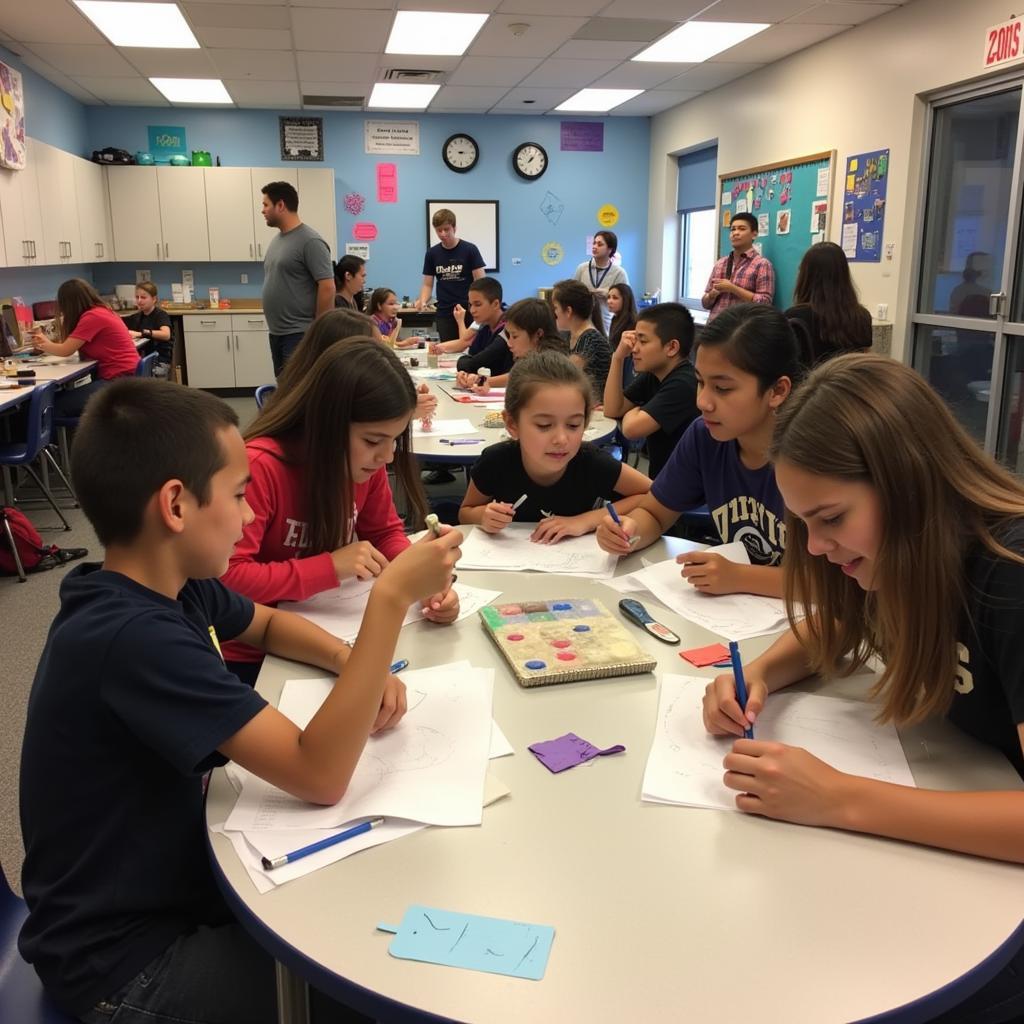Unleashing Creativity: Engaging Art Games for the Classroom
Art games provide a dynamic and interactive way to integrate art into the curriculum, fostering creativity and imagination in students of all ages. By incorporating art games into your lesson plans, you can transform your classroom into a vibrant hub of artistic exploration and expression.
Let’s dive into the world of art games and discover how they can enhance your classroom learning experience.
Why Use Art Games for Classroom Learning?
Art games offer a multitude of benefits for students, making them a valuable addition to any classroom environment. Here’s why you should consider incorporating them into your teaching toolkit:
- Increased Engagement and Motivation: Art games transform traditional learning into a fun and engaging experience. The interactive nature of these games captivates students’ attention and keeps them actively involved in the learning process.
- Boosted Creativity and Imagination: Art games encourage students to think outside the box and explore their creative potential. By experimenting with different art materials and techniques in a playful setting, students develop their artistic voices and unique perspectives.
- Enhanced Problem-Solving Skills: Many art games present challenges that require students to think critically and find creative solutions. These activities foster problem-solving abilities that extend beyond the art classroom.
- Improved Fine Motor Skills: Art games often involve hands-on activities that help develop fine motor skills in younger students. Activities like drawing, sculpting, and cutting help refine hand-eye coordination and dexterity.
- Fostering Collaboration and Communication: Collaborative art games promote teamwork and communication among students. By working together towards a common goal, students learn to share ideas, listen to others’ perspectives, and contribute to a group effort.
 Students Collaborating on an Art Project
Students Collaborating on an Art Project
Exploring Different Types of Art Games for the Classroom
The beauty of art games lies in their versatility. There is a wide array of art games suitable for different age groups and learning objectives. Here are a few popular categories:
1. Drawing and Painting Games
- Pictionary: A classic party game that translates seamlessly into the classroom. Students take turns drawing a word or phrase while their teammates guess. This game enhances vocabulary, drawing skills, and creative thinking.
- Blind Contour Drawing: This game challenges students to draw an object without looking at their paper. The focus is on observation and hand-eye coordination, resulting in surprisingly expressive lines and shapes.
- Collaborative Mural: Divide the class into groups and assign each group a section of a large sheet of paper. Each group creates a part of a larger image, fostering collaboration and large-scale artmaking.
2. Sculpture and Construction Games
- Cardboard Creations: Provide students with cardboard boxes, tape, and other recycled materials to design and build imaginative structures. This open-ended activity encourages problem-solving, spatial reasoning, and resourcefulness.
- Clay Character Challenge: Present students with a theme or story prompt and have them sculpt characters using clay. This activity sparks storytelling, character development, and three-dimensional artmaking.
- Found Object Sculpture: Take students on a nature walk to collect interesting objects like leaves, twigs, and stones. Back in the classroom, they can use these found objects to create unique sculptures, connecting art with the natural world.
3. Digital Art Games
- Digital Collage: Introduce students to digital collage using online platforms or apps. They can combine images, textures, and text to create visually striking compositions, exploring digital art techniques.
- Interactive Art Websites: Numerous websites offer interactive art games that allow students to experiment with different art tools and styles. These platforms provide a fun and engaging way to explore digital artmaking.
Tips for Implementing Art Games in Your Classroom
- Set Clear Objectives: Determine the specific learning outcomes you want to achieve with each art game. This helps you choose appropriate games and tailor instructions accordingly.
- Provide Clear Instructions: Clearly explain the rules and objectives of each game before starting. Ensure all students understand the task at hand.
- Create a Supportive Environment: Encourage creativity and risk-taking in a judgment-free zone. Remind students that art games are about exploration and having fun.
- Provide Feedback and Reflection: After each game, facilitate a brief discussion where students can share their experiences, challenges, and triumphs. Encourage them to reflect on their creative process.
- Connect Games to Curriculum: Integrate art games with other subject areas to create interdisciplinary learning experiences. For example, students can create artwork inspired by historical events or scientific concepts.
 Students Engaged in an Art Game
Students Engaged in an Art Game
Conclusion
Integrating art games into your classroom curriculum is a surefire way to ignite creativity, foster collaboration, and enhance the overall learning experience. By embracing the power of play, you can create a dynamic and engaging environment where students thrive both academically and artistically.
So, unleash the creative potential within your students and watch them blossom through the magic of art games!
FAQs About Art Games for the Classroom
1. What are some good art games for elementary students?
Elementary students often enjoy games like Pictionary, Blind Contour Drawing, and Cardboard Creations. These games are engaging, encourage creativity, and help develop essential skills.
2. How can I incorporate art games into my high school curriculum?
For high school students, consider more challenging games like Exquisite Corpse (a collaborative drawing game) or art history-themed trivia. You can also connect games to specific art movements or techniques.
3. What if I don’t have a lot of art supplies?
Many art games can be adapted to use readily available materials like paper, pencils, crayons, or recycled objects. Don’t be afraid to get creative with what you have!
4. How can I make sure all students feel comfortable participating?
Create a safe and inclusive environment where students feel comfortable taking risks and expressing themselves. Emphasize that art games are about exploration and having fun, not perfection.
5. Are there any online resources for finding art games?
Yes, many websites offer free art game ideas and instructions. You can also find inspiration on platforms like Pinterest and educational blogs.
Need help bringing more art into your classroom? Check out these resources:
- Art Class Ice Breakers: Fun and engaging activities to start your art lessons on a creative note.
- Language Arts Bulletin Board Ideas: Creative ways to display student work and inspire language arts learning.
For further assistance, don’t hesitate to reach out to us! Contact us at 02462573573, email us at [email protected], or visit us at Savico Megamall, 7-9 Đ. Nguyễn Văn Linh, Gia Thụy, Long Biên, Hà Nội 10000, Việt Nam. Our dedicated customer support team is available 24/7 to assist you.


